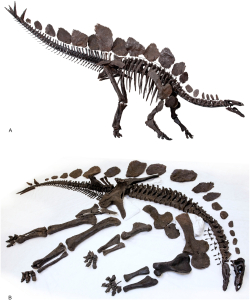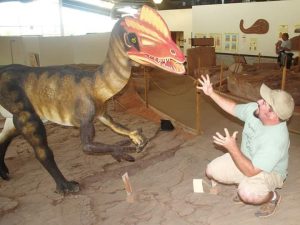Welcome to the PLOS Paleo network!
For those not into Twitter and Facebook, you might have missed the recent launch of the new PLOS Paleo network! PLOS is an open access publisher, and the overall aim is to combine access to published scientific articles with community-driven communication of that research. Which I think is pretty awesome, as you have both specialist and non-specialist accessibility covered then, and communicated from within the research community. This is a far superior mode of communication for me over the mass media (often incorrect or missing key context/information), papers themselves (language barriers), Twitter (too brief), or popular sites like ‘I Fucking Love Science’ et al., where often content is littered with hyperbole, spin, and forced ‘sex appeal’ rather than a true appreciation of the actual research.

Within just a month or two of launching, the PLOS Paleo network, comprising Andy Farke, Sarah Gibson, and myself, has released several articles about the latest research in Palaeontology, as well as attended a conference in Dallas where we received a warm welcome from the research community! Select articles so far include:
- Does this dinosaur make me look fat? What is the relationship between body mass and skeletal mass in birds, and what are the evolutionary implications of this? (source)
- The “Slasher” Ray: An extinct fish with a saw-like nose! Based on forthcoming research presented at the conference in Dallas.
- Pteranodon osteohistology! Or, bizarrely bacon-esque pteranodon bones.. Also based on forthcoming research presented in Dallas.
- Laser-stimulated fluorescence in palaeontology. How are researchers using lasers to expose the secrets of the fossil record? (source)
- Dilophosaurus – less of a frilly, venom-spitting lizard than we thought. Documenting the latest on this weird dinosaur from Dallas.
- Life, sex and death of dinosaurs. Covering an epic new study into the Natural History Museum of London’s latest dinosaur addition, Sophie the Stegosaurus. (source)

What you might notice about these articles is that they’re not exactly the kinds of things that get covered in the broader or more popular media. However, what they represent are scientifically interesting, and perhaps more importantly, significant steps forward, that tend to receive less overall coverage because of a perceived lack of ‘sexiness’. The network is only just getting off the ground, but I hope you see that it is a fairly novel approach to communicating research, and find some of what we write about informative and interesting!
You can follow the network on Facebook and Twitter.